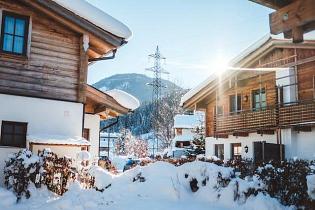How to Make Your Living Space Warmer in The Winter
A warm and inviting home can help you relax and enjoy the winter season to the fullest. But winterizing your home is not only about comfort; it is also important for energy efficiency. A properly insulated and weatherized home can significantly reduce heat loss, resulting in lower energy bills.
Common Culprits
The most significant sources of heat loss include windows, doors, walls, floors, and the roof. These areas tend to have gaps, cracks, or inadequate insulation, allowing cold air to infiltrate your home and warm air to escape. By addressing these areas, you can prevent heat loss and create a cozy environment.
You should also check the insulation in your attic, walls, and floors. If you notice any gaps or areas with inadequate insulation, consider adding more insulation or hiring a professional to do so.
Buying New Windows
If you need to purchase new windows, we suggest that you buy triple glazed windows because they are more energy efficient. They have three layers of glass separated by insulating gas which reduce the amount of heat that escapes from your home. Moreover, these windows also improve sound proofing to enhance the comfort in your home.
Window Treatments: Maximizing Heat Retention
Windows are notorious for letting heat escape from your home. To combat this, invest in energy-efficient window treatments such as thermal curtains or blinds. These treatments are designed to insulate your windows, reducing heat loss and keeping cold drafts at bay. During the day, open the curtains or blinds to allow natural sunlight to warm your home.
At night, close them to create an additional barrier against the cold. By maximizing heat retention through window treatments, you can create a cozy and inviting atmosphere while reducing energy consumption.
Winterizing Your Plumbing System: Preventing Frozen Pipes
Frozen pipes can be a nightmare during the winter months. To prevent this potential disaster, take the necessary steps to winterize your plumbing system. Start by insulating exposed pipes in unheated areas such as the basement, garage, or crawl spaces. Use pipe insulation sleeves or heat tape to protect them from freezing temperatures. Additionally, disconnect and drain all outdoor hoses and faucets to avoid water freezing and causing damage. By taking these precautions, you can ensure that your plumbing system remains intact and functional throughout the winter.
Creating a Cozy and Inviting Atmosphere with Decor and Textiles
Once you have addressed the practical aspects of winterizing your home, it’s time to focus on creating a cozy and inviting atmosphere. Decor and textiles play a significant role in achieving this. Incorporate warm colors such as deep reds, oranges, and browns into your decor. Add plush throw blankets and soft cushions to your seating areas, inviting you to snuggle up and relax. Consider layering rugs on your floors to create a warmer surface. By using these decor and textile elements, you can transform your living space into a cozy retreat from the winter weather.
Protecting Your Home from the Elements
Winterizing your home is not limited to the interior; your outdoor spaces also require attention. Start by cleaning and storing outdoor furniture, grills, and other equipment to protect them from the elements. Trim any tree branches that may pose a risk of breaking and damaging your home during winter storms. Clear your gutters of leaves and debris to prevent water from overflowing and potentially causing damage.
Finally, ensure that your walkways and driveways are clear of ice and snow to prevent accidents. By taking the steps shared in this blog, you can protect your home and ensure a safer winter season.




